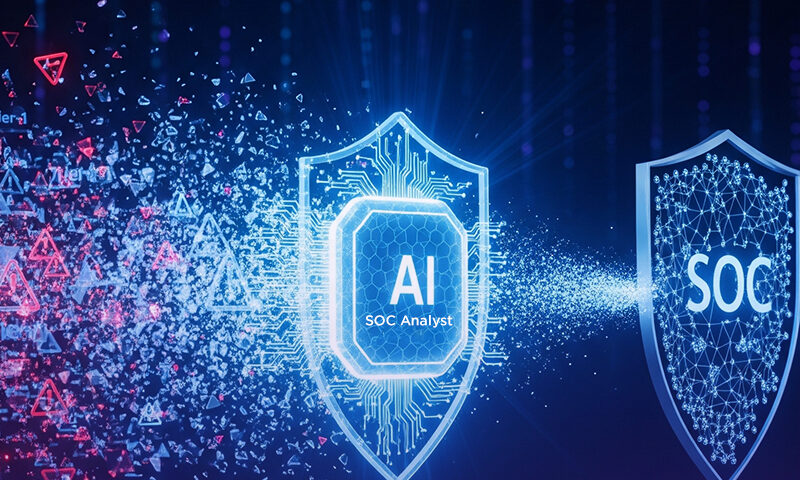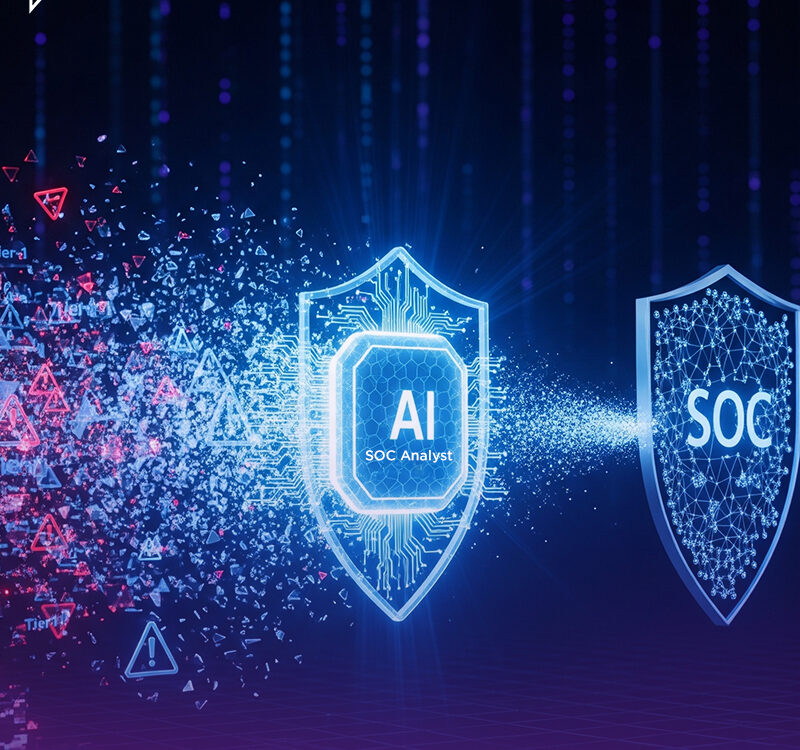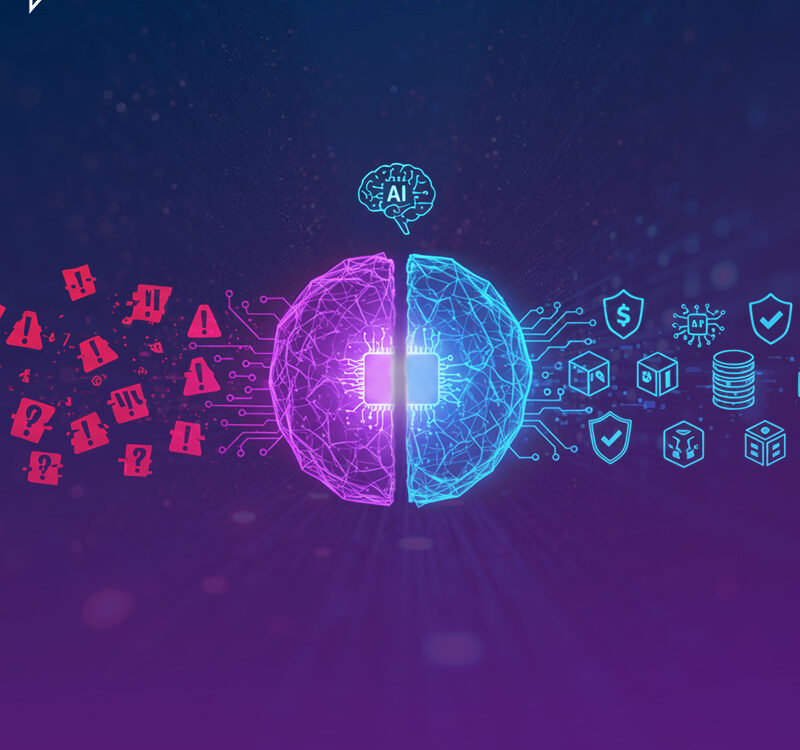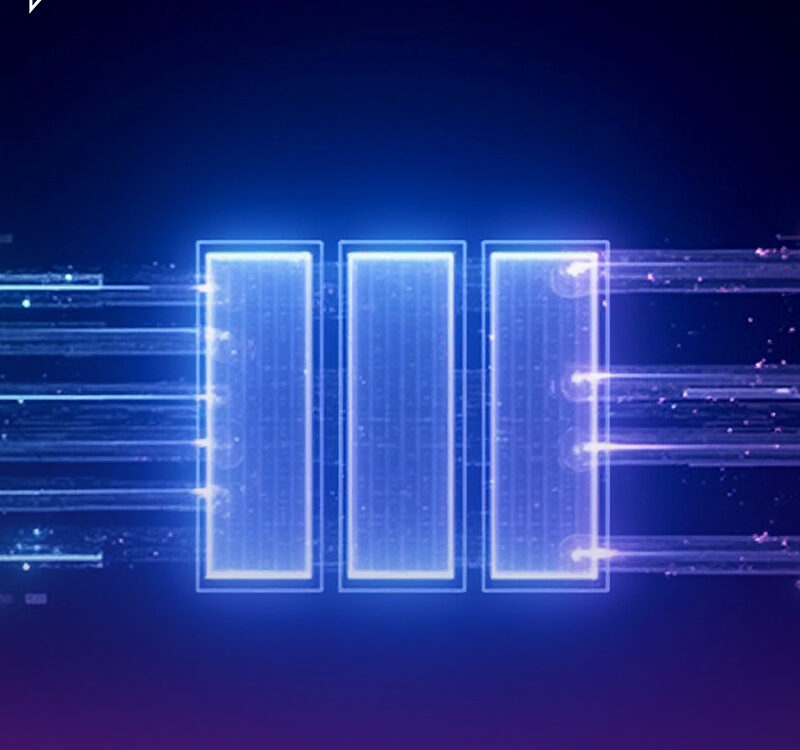
Why General-Purpose LLMs Fail in the SOC
August 13, 2025
From Raw Alerts to Ready Intelligence: Meet the Enrichment Agent
September 12, 2025
Why General-Purpose LLMs Fail in the SOC
August 13, 2025
From Raw Alerts to Ready Intelligence: Meet the Enrichment Agent
September 12, 2025The Problem with Tier-1 Loops
If your SOC’s morning routine is still opening a SIEM to a wall of noise, tab-hopping through enrichment tools, and copy-pasting summaries into tickets, you don’t have a people problem you have a loop problem.
Tier-1 work isn’t a “job” in the artisanal sense; it’s a high-volume loop of repeatable decisions:
- Suppress the obvious junk
- Merge the look-alikes
- Enrich what survives
- Assign a category and priority
- Write a crisp summary
- Nudge a playbook
- Escalate the handful that truly matter
Loops are exactly what AI agents are good at. The shift isn’t about adding more orchestration; it’s about adding judgment where orchestration stops. When judgment becomes machine-grade and policy-bound, Tier-1 as we know it fades into the background.
Why SOAR Fell Short
Traditional SOAR never finished the job. It stitches tools, but it doesn’t decide. Humans were kept in the loop to make calls: what’s noise, what’s duplicate, what’s malicious, what to do next.
That’s where agents step in.
The Flow of an AI-Powered SOC
Think of a single alert entering the system:
- Deduplication collapses look-alikes within a time window.
- Noise Suppression applies allowlists, thresholds, and learned patterns to drop non-events.
- S3 Agent scores against asset criticality, user risk, and recent activity.
- Classification assigns category, severity, and priority.
- Enrichment gathers truth sets (WHOIS, DNS, sandbox, EDR sightings).
- IOC Verdict Agent delivers an explainable call malicious, suspicious, or benign.
Overseeing it all is Sara, the AI Analyst, with OmniSense™ as the policy brain: deciding which agent runs when, what data it touches, which tools it may talk to, and how far autonomy goes.
The net effect: the first human touch shifts from alert one to high-fidelity incidents that truly deserve attention.
Guardrails and Risk-Tiered Autonomy
“Set it and forget it” is a fantasy. The reality is risk-tiered autonomy:
- High-risk actions (disable a VIP account, tenant-wide blocks) → approval-gated
- Moderate-risk actions → proposal mode (evidence + suggestion to human approver)
- Low-risk, reversible actions (block known-bad IPs, tag entities) → safe auto-execution
Safety mechanisms include:
- Scoped service accounts
- Allow lists and change windows
- Audit logs and evidence packs
- Deterministic policy checks
- RBAC-scoped, time-bounded retrieval
- Typed, validated outputs
- Global and per-control kill-switches
- Idempotent rollbacks with automatic autonomy downgrade
Real-World Results at Scale
In an anonymized 30-day pilot (5k endpoints, 12k mailboxes, SIEM + EDR + email security):
- L1 tickets dropped 68% (1,240/day → 397/day)
- Median triage time: 11 minutes → 2 minutes
- 43% of L1 tickets auto-closed with complete evidence packs
- Escalation acceptance: 73% → 92% (better summaries & enrichment)
- Rollbacks: 3 total, all executed in under 45 seconds, zero SEVs
Week Four Snapshot:
- 1,180 alerts ingested
- 520 suppressed (noise)
- 260 merged (deduplication)
- 120 routed to humans
- 35 escalated to Tier-2 with evidence
- 45 low-risk auto-actions (fully reversible)
That’s what replacing a loop with agents looks like in numbers.
The Future of Tier-1 Analysts
A fair question: what happens to L1 analysts?
Repetitive work drives burnout. When the loop goes away, the people do not. They move up the loop into three natural tracks:
- L2 Investigation & Threat Hunting
- Pattern recognition, hypothesis testing, campaign-level thinking.
- Pattern recognition, hypothesis testing, campaign-level thinking.
- Agent Operations & Playbook Engineering
- Tuning thresholds, managing autonomy, tracking SLOs no code required.
- Tuning thresholds, managing autonomy, tracking SLOs no code required.
- Detection & Threat Intelligence Design
- Building better detections, enriching policies, and improving context.
- Building better detections, enriching policies, and improving context.
This isn’t a layoff story it’s a retention story.
The Upshot
Tier-1 SOC work is a loop that machines can and should run. With risk-tiered autonomy, real guardrails, and honest metrics, you can eliminate the grind without losing control or context.
Analysts don’t disappear. They reappear where they belong: investigating, hunting, designing better detections, and communicating clearly when it matters.
If your queue still looks like it did in 2020, your adversary thanks you.
Want to see the “after” picture with your own data?
Bring a week of raw alerts. Sara and OmniSense™ will run the funnel, and you can watch Tier-1 quietly melt away.
Schedule a demo today.




